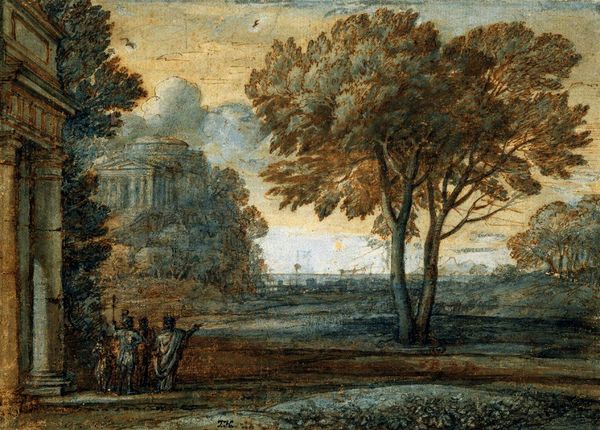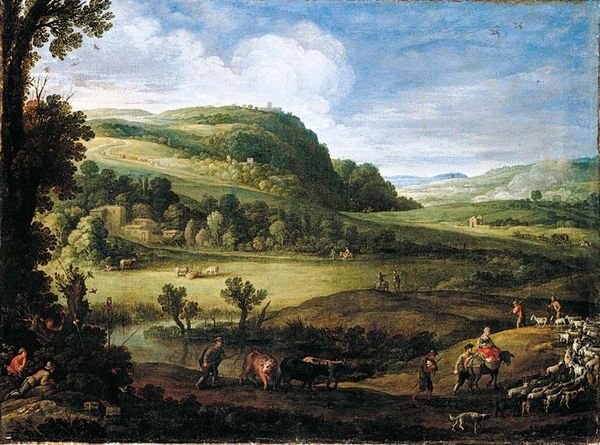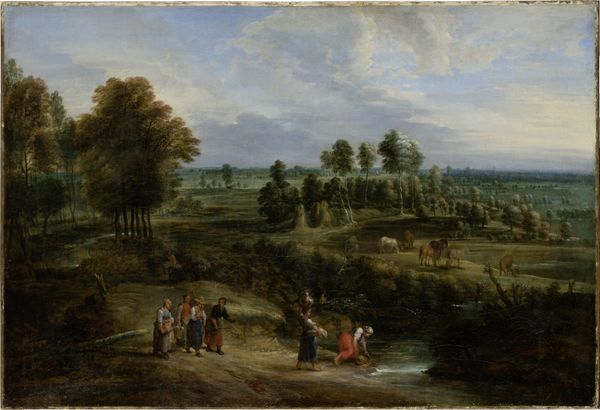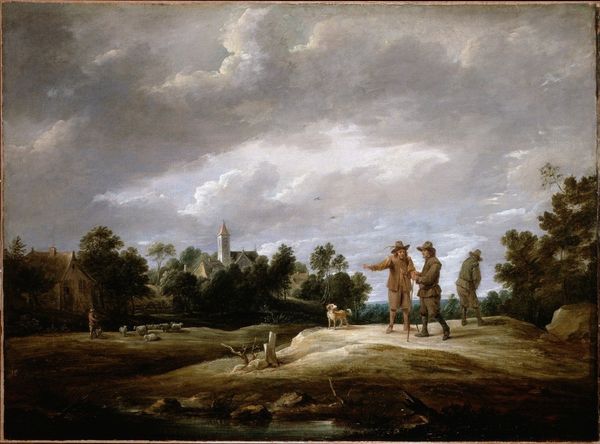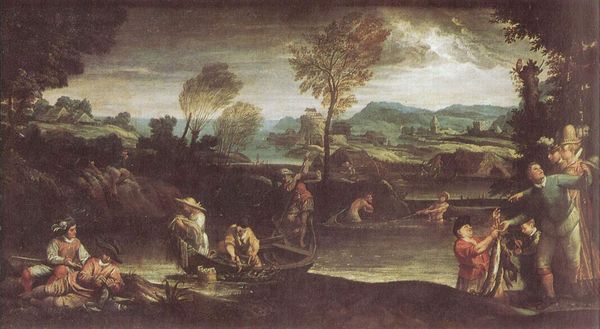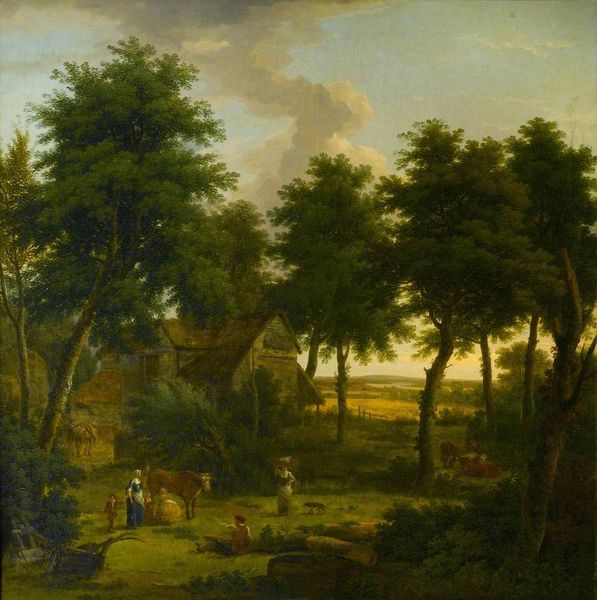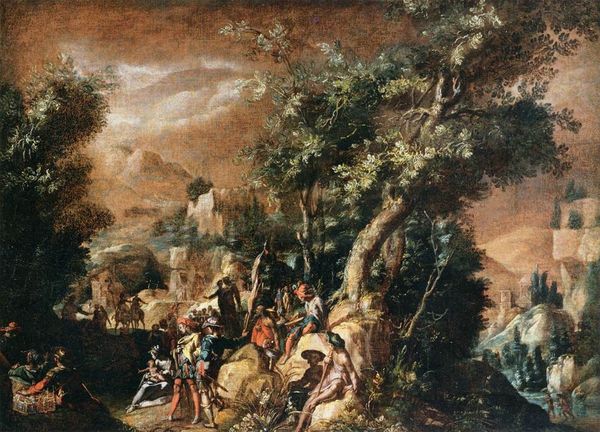
The Return of the Farm Workers from the Fields 1640
0:00
0:00
peterpaulrubens
Palazzo Pitti, Florence, Italy
oil-paint
#
sky
#
baroque
#
oil-paint
#
landscape
#
oil painting
#
flemish
#
genre-painting
Dimensions: 121 x 194 cm
Copyright: Public domain
Curator: Peter Paul Rubens, a towering figure in the Baroque tradition, completed this work, "The Return of the Farm Workers from the Fields," around 1640. You’ll find it at the Palazzo Pitti in Florence. Editor: It feels… monumental, yet strangely intimate. That vast, billowing sky looms over everything, but then you've got these little figures trudging home, all hunched over and weary. It’s like a grand epic and a tiny poem all in one. Curator: Observe the diagonal thrust of the composition—how the road and figures pull your eye from the lower right to the distant horizon on the left, anchoring us with the solidity of form, guiding us into an idealized rendition of the Flemish countryside through complex arrangements of tone, shape, color and line. It serves as a kind of allegory—or, maybe better to state, symbolic encapsulation—of human life integrated into the larger world order, mediated through Baroque compositional style. Editor: Right, allegorical… I see it more as a celebration, and an honest one, of the everyday. The laborers, their stooped postures… they're not idealized gods or heroes, but you can feel their exhaustion and pride mingling in equal measure. It makes me think of my own days digging in the garden, you know? Back aching, but the satisfaction of hard work. The sun baking my neck is almost visible, and certainly palpable through the medium, here. Curator: Interesting, but Rubens’ mastery of oil paint manipulation certainly extends beyond any direct mirroring of reality; his artistic process and Baroque ideology come together in highly symbolic presentations. Editor: Fair enough, but those colours! That ochre haze… it’s like the whole scene is bathed in the amber light of a fading day. Even the sky seems to vibrate, full of latent energy—you can practically feel the rumble of distant thunder in that celestial cathedral. So much power on the verge of imploding with meaning—it almost makes my heart ache for a simpler life. Curator: Precisely that dynamism and color arrangement marks its contribution to Baroque practice, setting a paradigm which continues to ripple across the histories of both genres. It demonstrates what can occur through strict regulation and thoughtful variation of form. Editor: You know, that tension between grand design and human detail is what really grabs me about this piece, whether artist's intention, cultural influence or artistic output is your focus. Thanks for helping me see beyond my own subjective take on this lovely tableau! Curator: A quite pleasurable investigation, don't you concur? We've managed to extract various and equally valuable facets of this singular work.
Comments
No comments
Be the first to comment and join the conversation on the ultimate creative platform.


